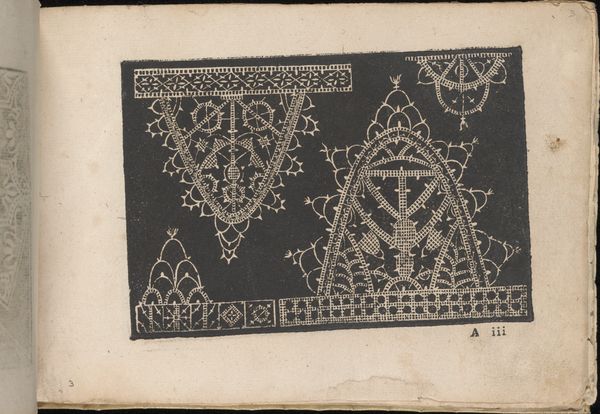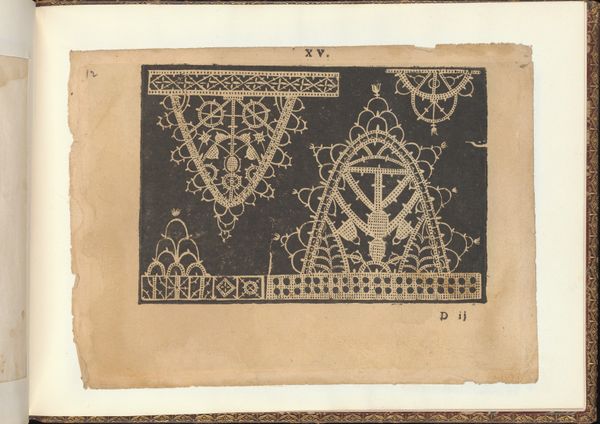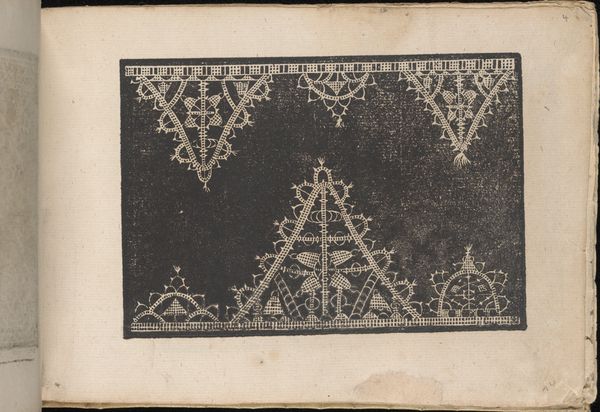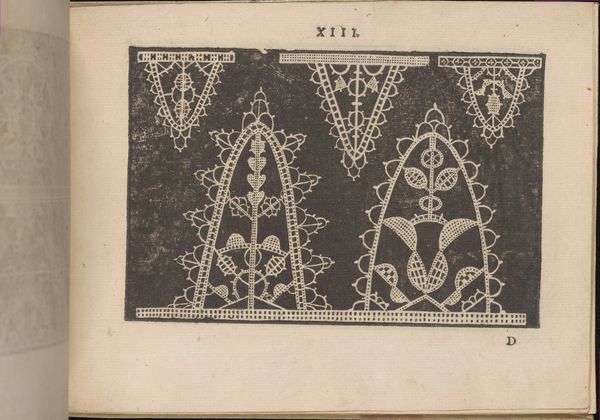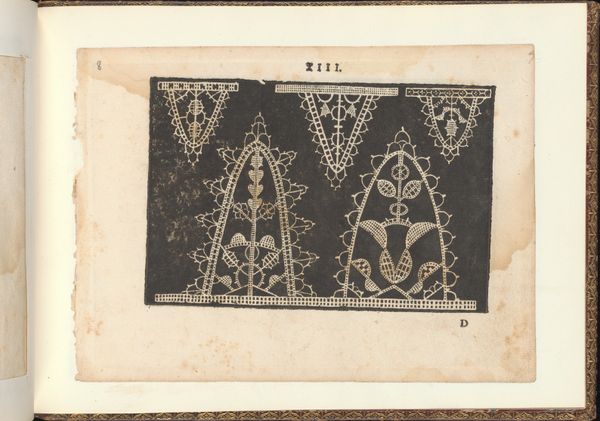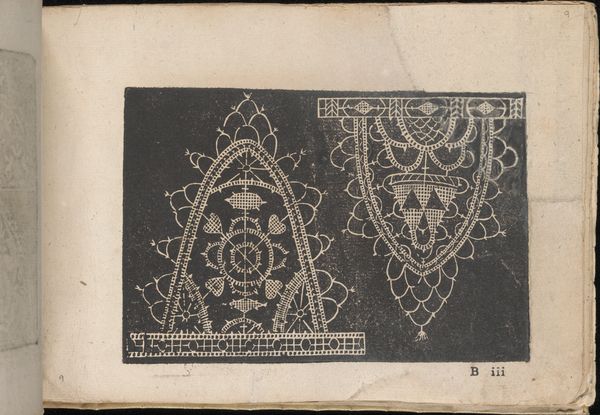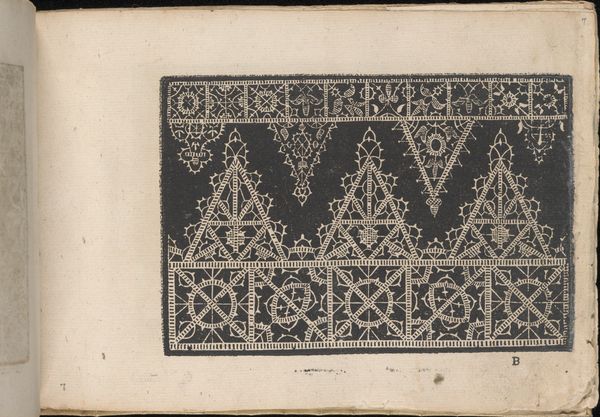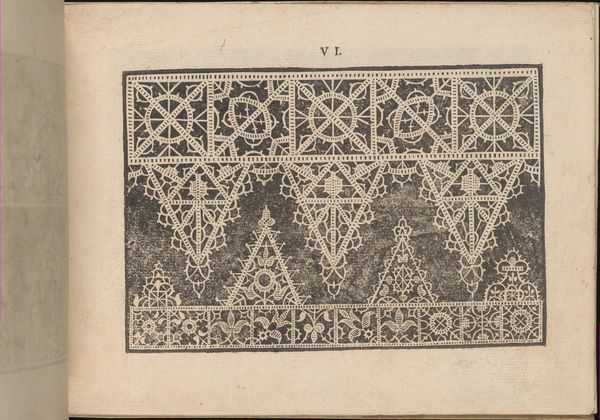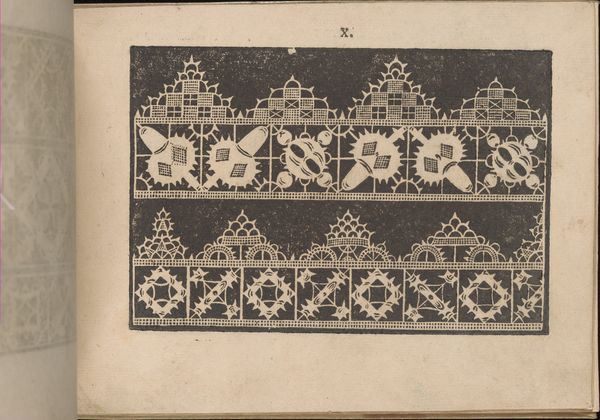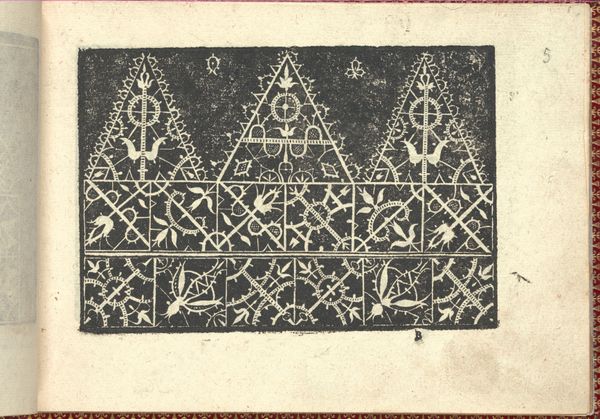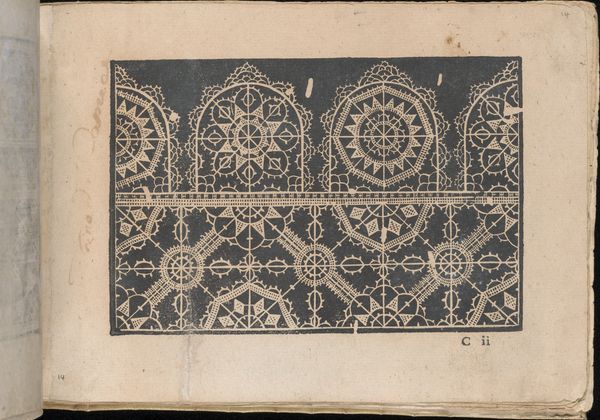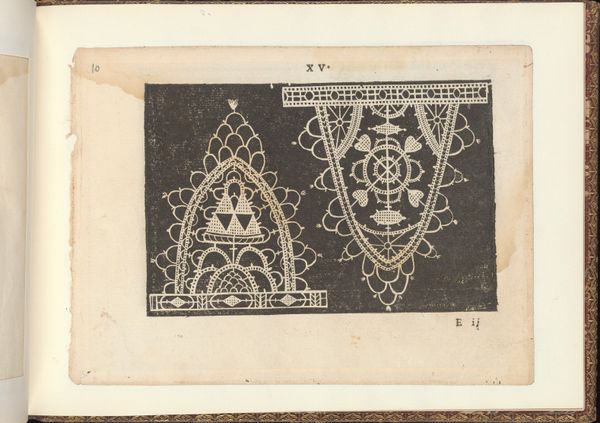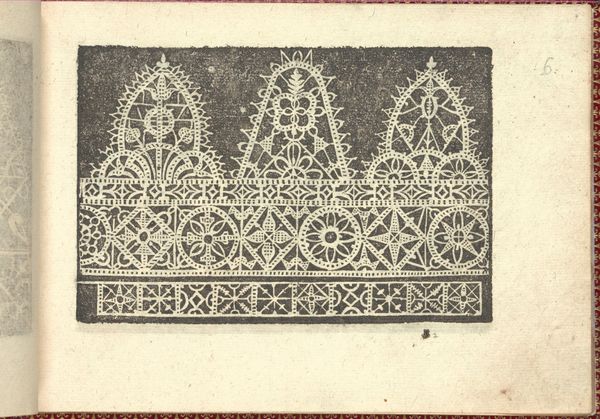
Prima Parte de' Fiori, e Disegni di varie sorti di Ricami Moderni, page 15 (recto) 1591
0:00
0:00
drawing, graphic-art, ornament, print, ink, woodcut
#
drawing
#
graphic-art
#
ornament
#
ink paper printed
# print
#
book
#
11_renaissance
#
ink
#
woodcut
Dimensions: Overall: 5 5/16 x 7 5/16 in. (13.5 x 18.5 cm)
Copyright: Public Domain
Curator: This image is page 15 from "Prima Parte de' Fiori, e Disegni di varie sorti di Ricami Moderni," or "First Part of Flowers and Designs of Various Kinds of Modern Embroidery," printed in 1591 by Giovanni Battista Ciotti. Editor: Oh, it’s got a kind of stark, elegant simplicity. The contrast between the dark background and the white, intricate designs gives it real pop. Like seeing lace against the night. Curator: Indeed. These aren't artworks in the traditional sense but rather templates, specifically woodcut patterns for embroidery. In 16th-century Europe, printed pattern books were invaluable for disseminating new styles. The black background you see here, almost negative space, would be fabric in the final design. Editor: So these aren't just pretty pictures, they're like blueprints for empowering women to create, to literally weave their own narratives! It makes you think about the socio-economic implications. Were these patterns only accessible to wealthier women? Did their popularity influence gender roles? Curator: Precisely! The woodcut technique allowed for mass production, making designs more accessible than individually drawn patterns. Still, the cost of materials and the time required for embroidery would certainly have been a factor of privilege. The designs themselves, we think they reflect popular trends, perhaps even coded messages about status or cultural affinity. Editor: You know, I initially saw them as purely decorative, but the thought that these patterns carry deeper symbolic meaning is fascinating. I like that. These aren’t simply aesthetic choices but represent tangible threads in the social fabric of the Renaissance. Curator: Right. Consider the impact on fashion trends and the emergence of embroidery as a form of personal expression and professional enterprise. The intersectionality is astonishing. The book demonstrates a blend of art, craft, commerce, and social identity. Editor: This woodcut is so much more than a pretty image! I now see it as an archive, pregnant with information about class, gender, labor, and the circulation of artistic ideas. Curator: Exactly. Looking at these seemingly simple floral and geometric patterns, it's amazing what stories and insights they reveal, centuries later. Editor: It’s really about looking beyond the surface to find the radical in the seemingly ordinary, and how creative practices of the time provided a silent protest of sorts.
Comments
No comments
Be the first to comment and join the conversation on the ultimate creative platform.
